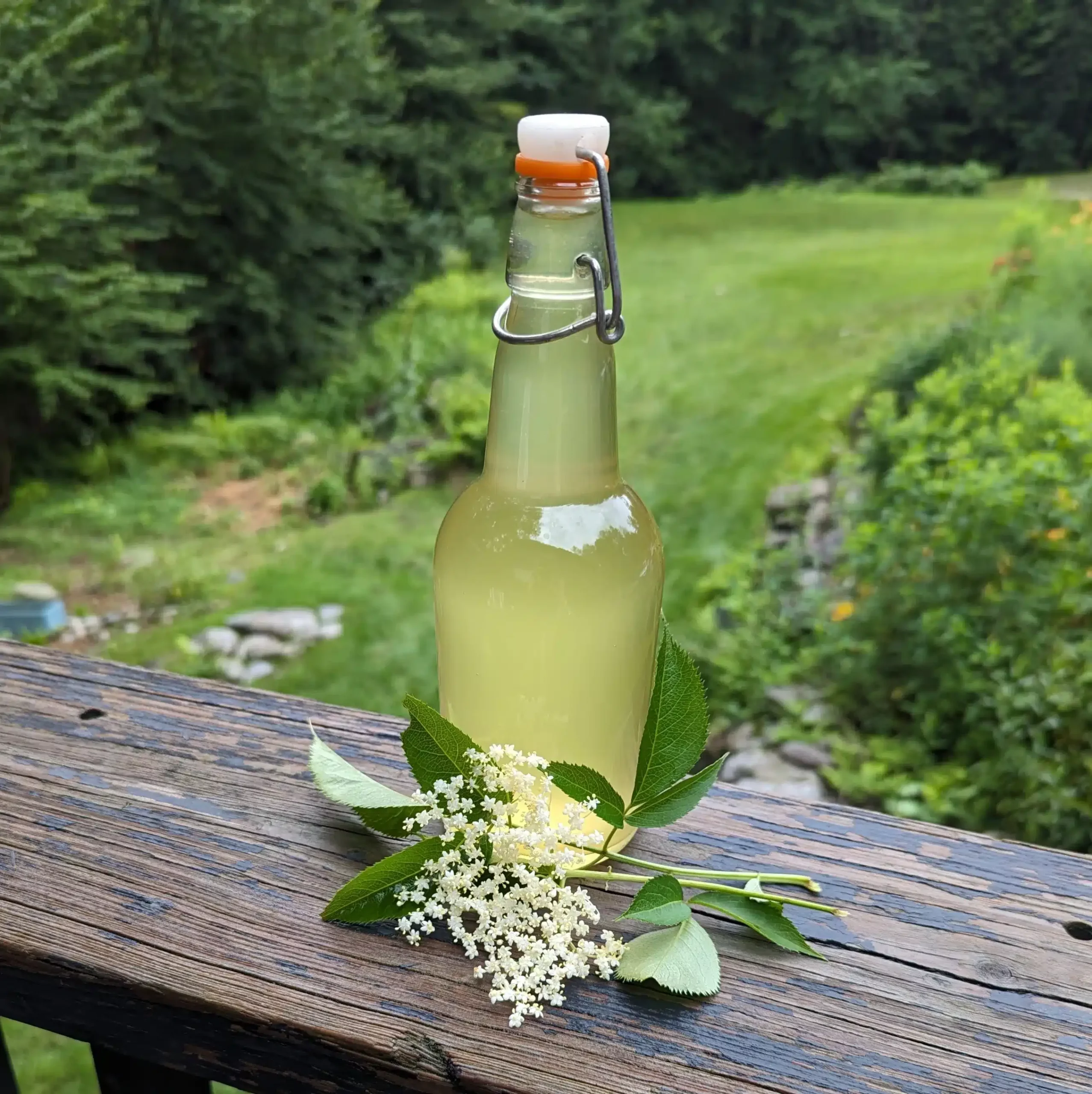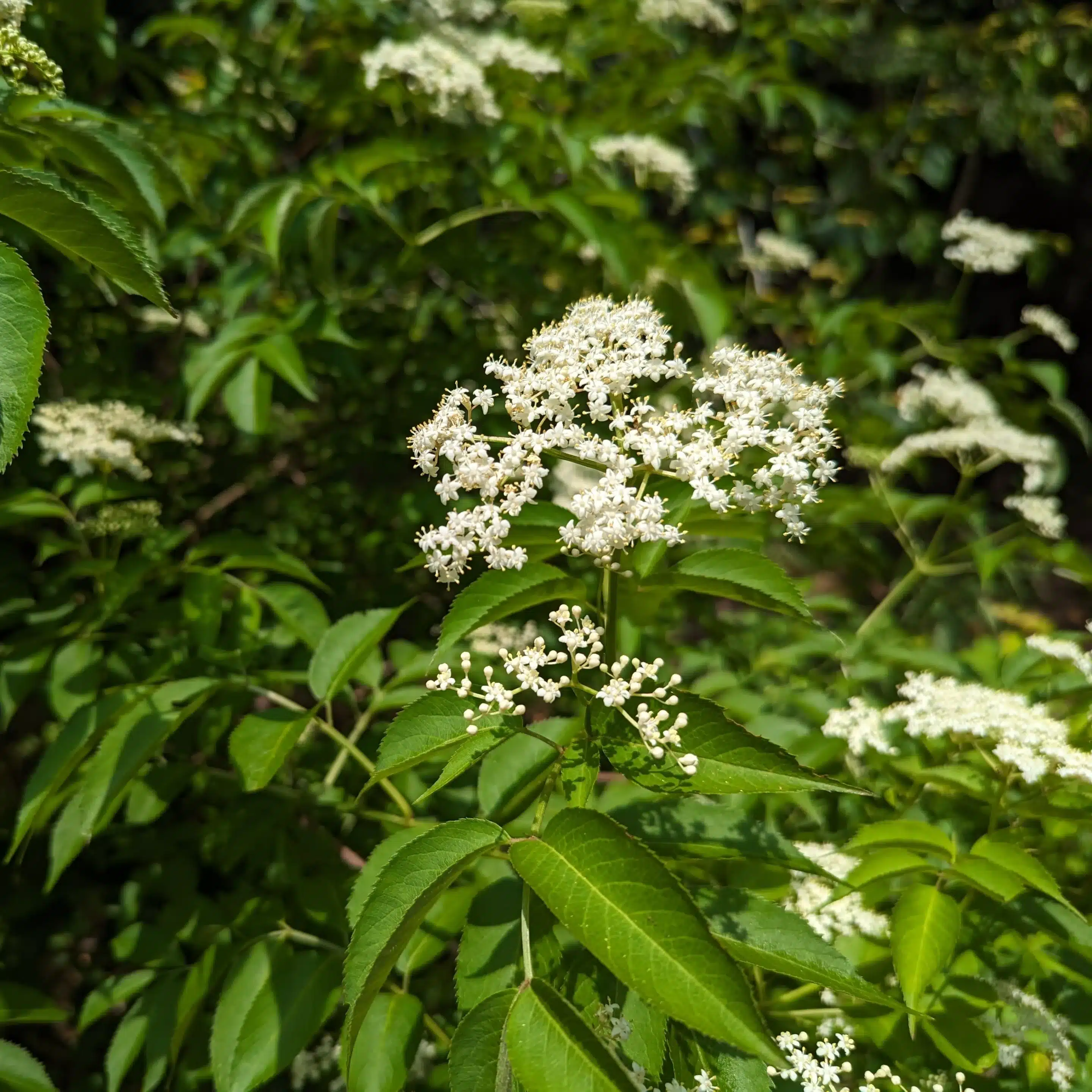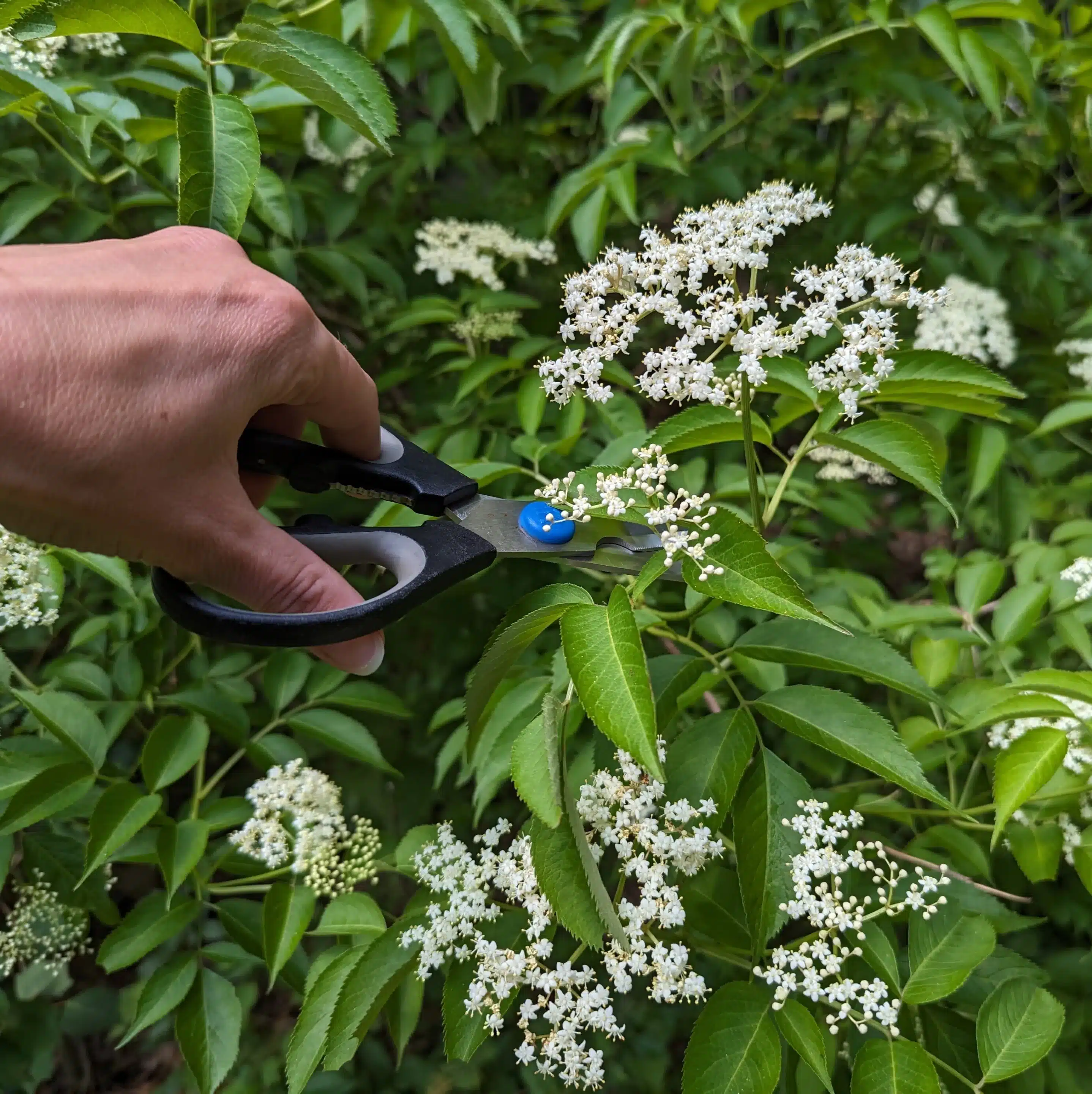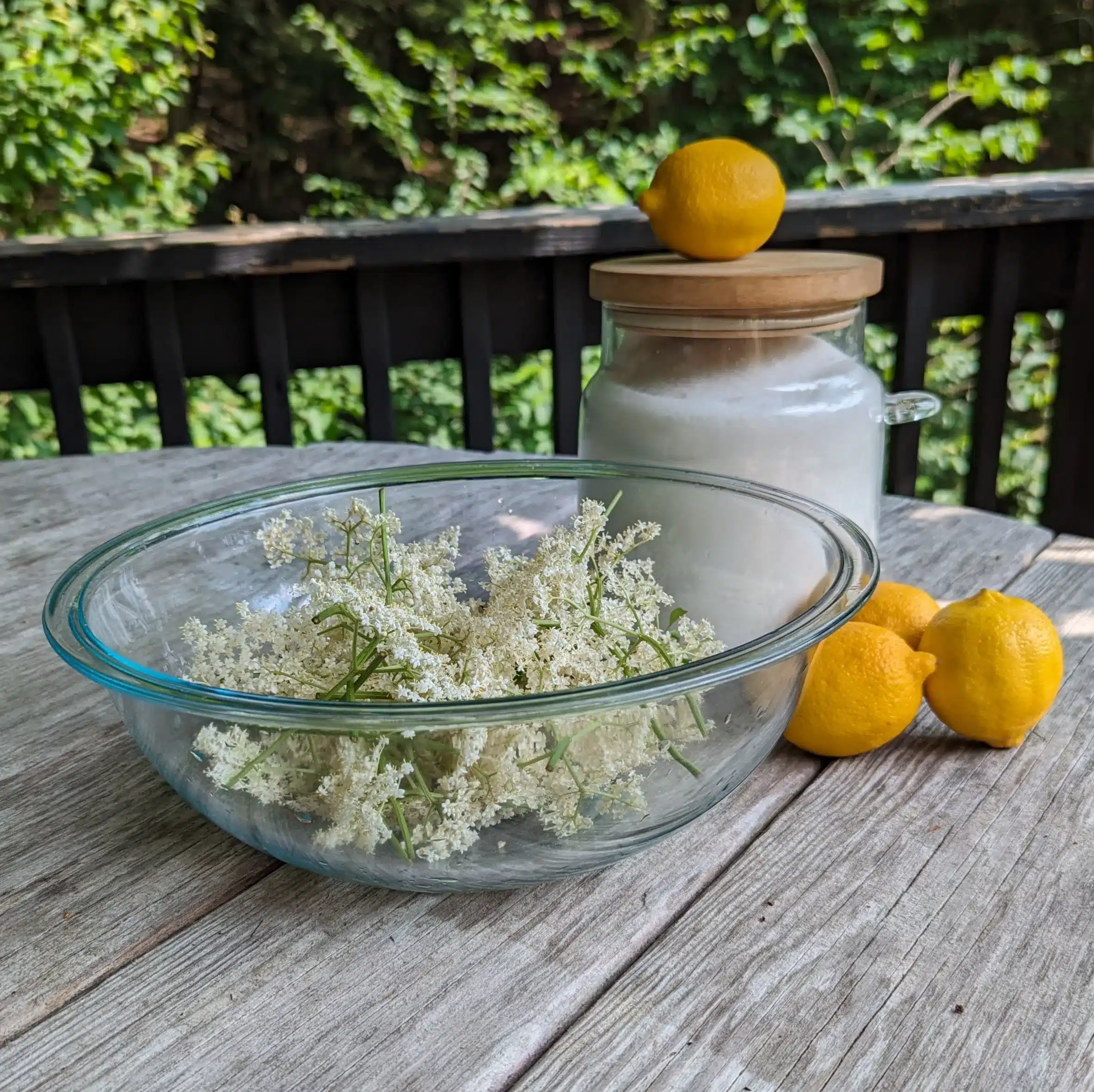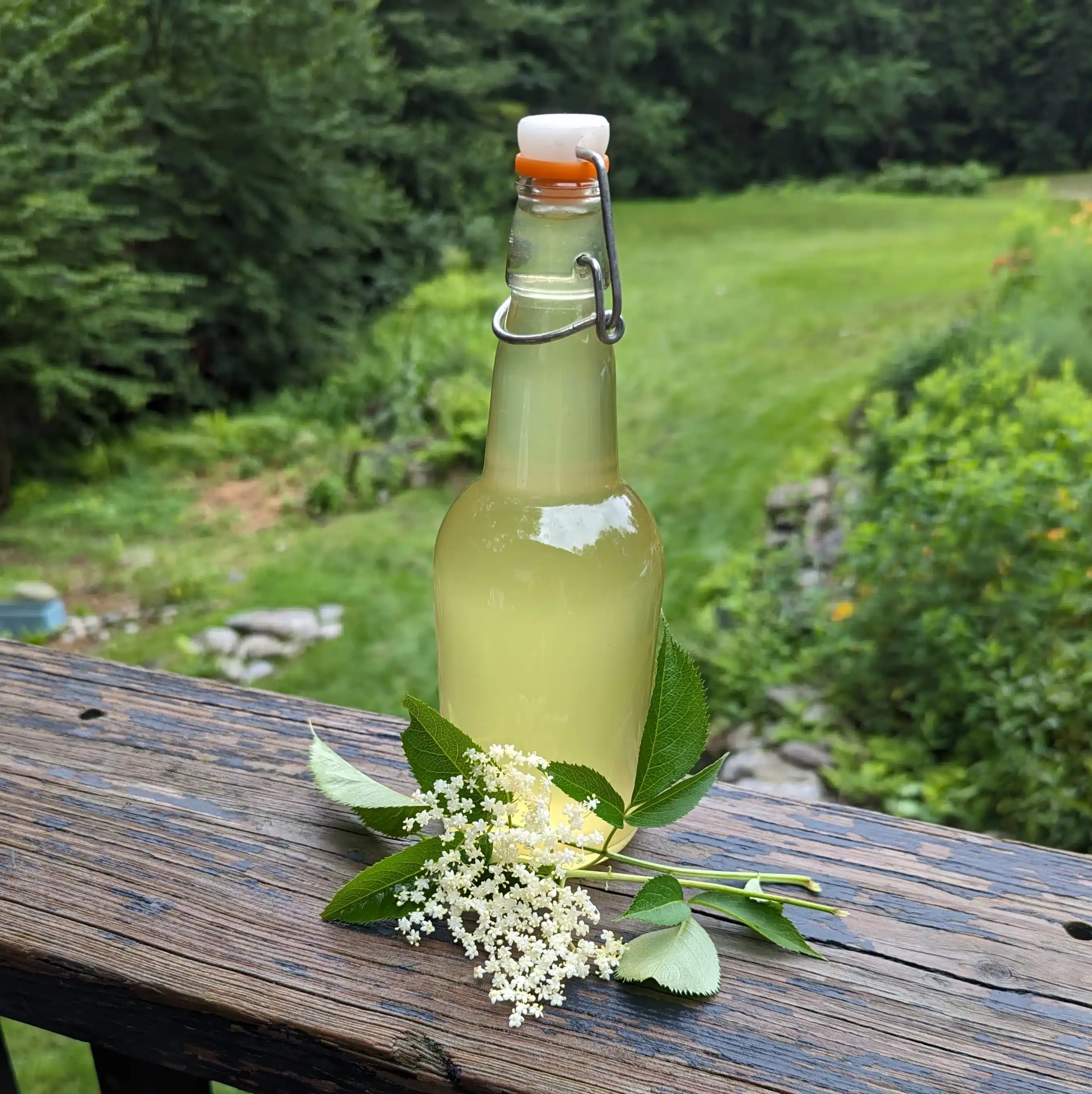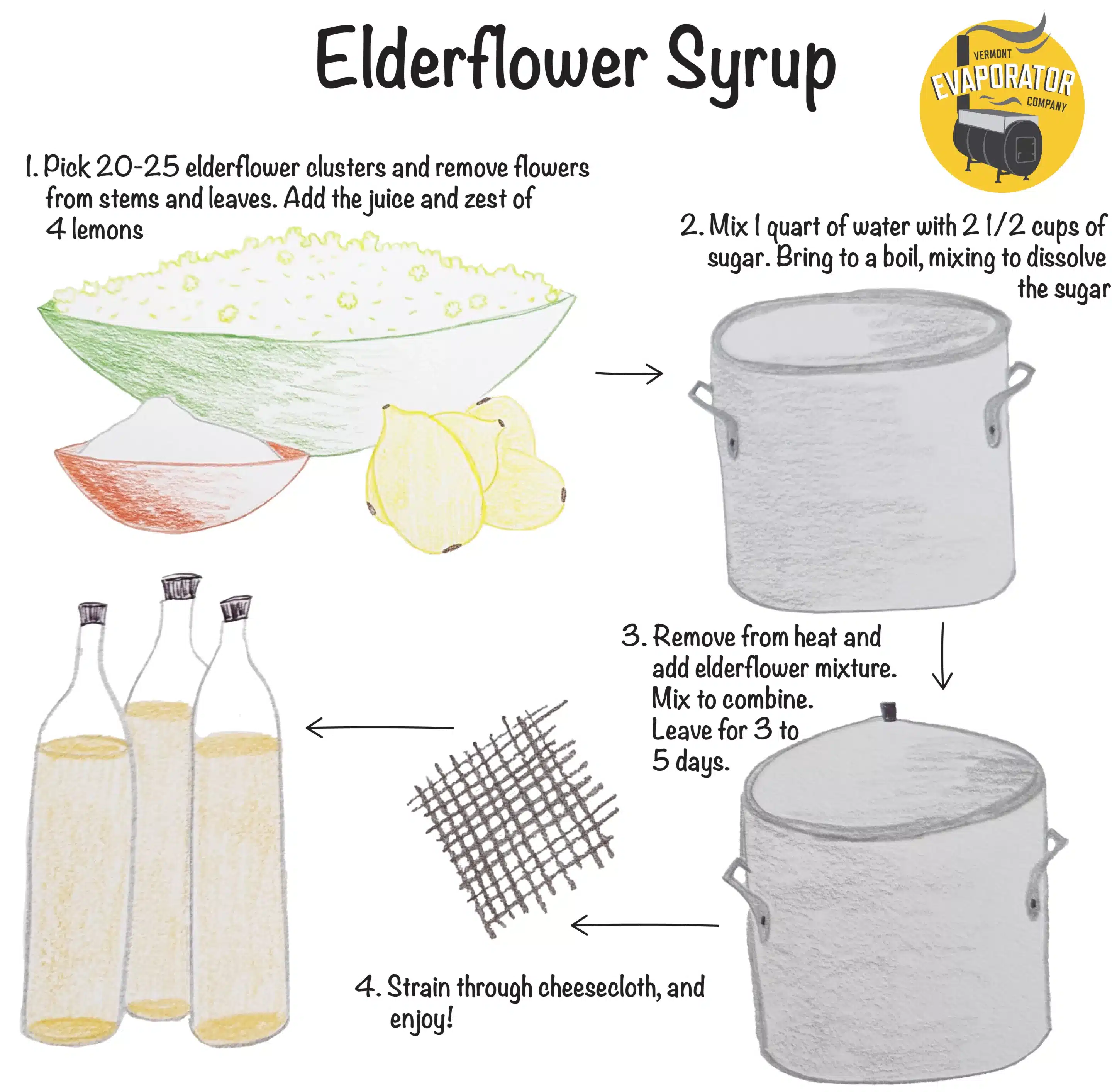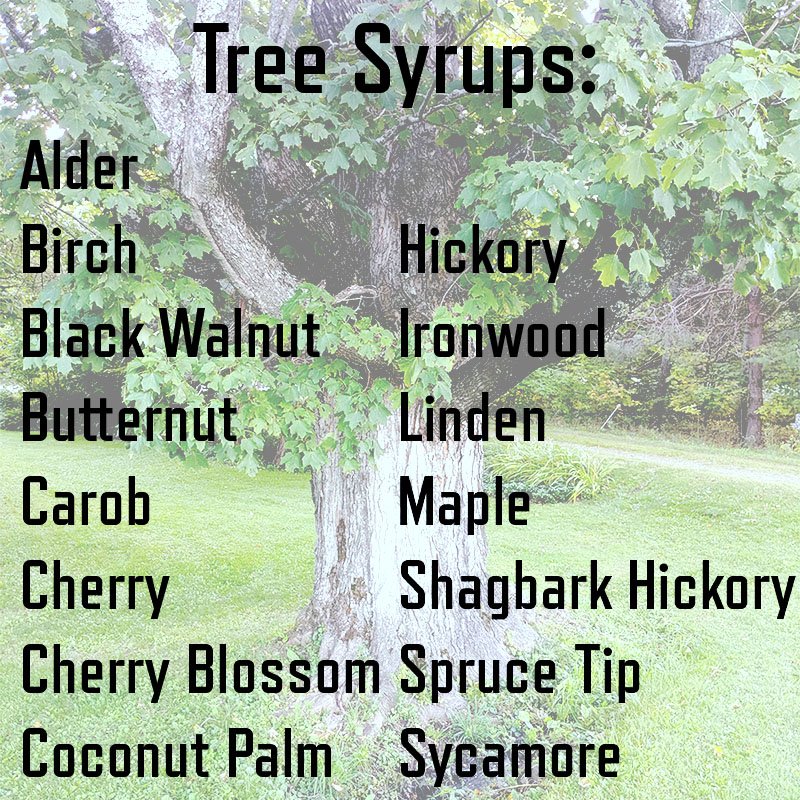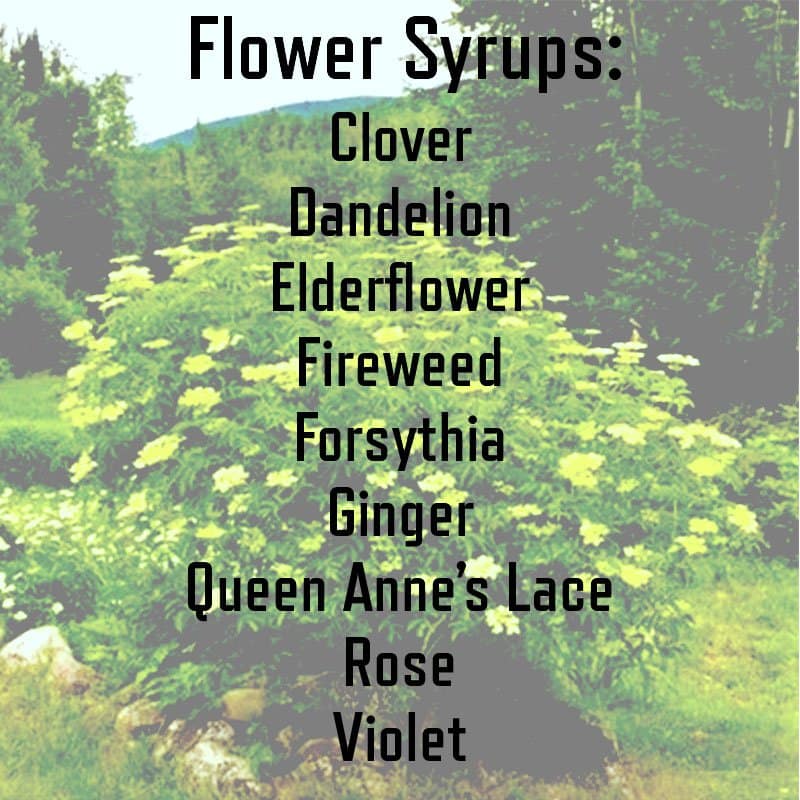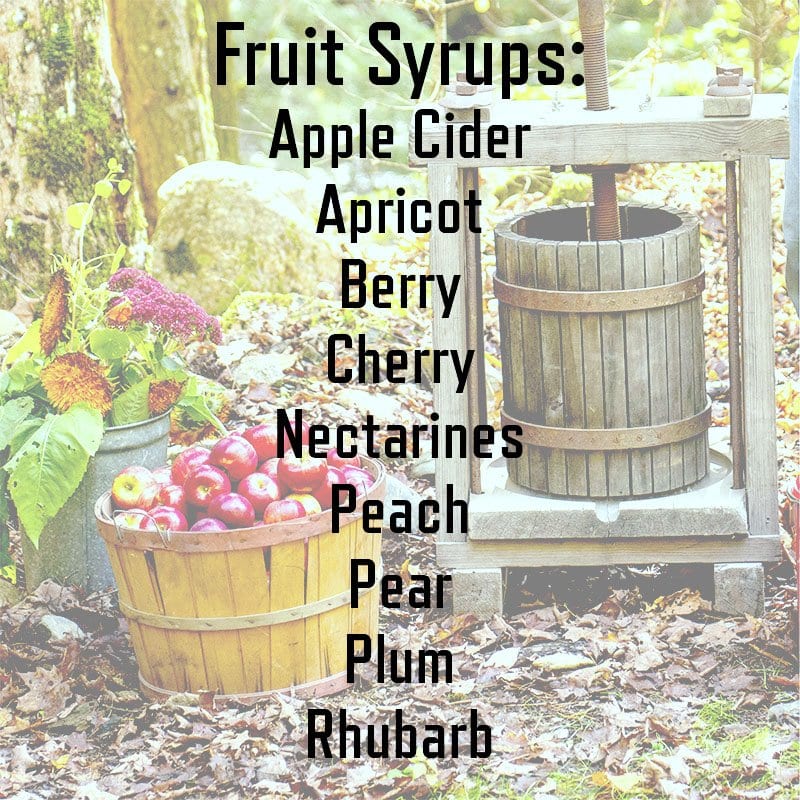In late June, we took a family trip down to Lake Wallenpaupack, a large reservoir nestled in the Pocono Mountains. (It’s a lovely part of sugar country. Check it out!) On the way home to Vermont, all the way back through Pennsylvania and New York, you could see the elder bushes blooming right off the highways. That’s how we knew it was almost time to make elderflower syrup from the bush that grows wild in our backyard.
We’ve written about the taste of elderflower syrup before. That was in another off-season, beyond-maple post. In that post, we described the tastes of elderflower, rhubarb, blueberry, raspberry rhubarb, apple cider, birch, black walnut, spruce tip and sweet sorghum syrups.
Silver Lake Syrups made the elderflower syrup we tasted before. We described their elderflower syrup as ” medium amber syrup with a soft, citrusy smell . . . complex, with a mixed-citrus marmalade, bitter-tart front and a flowery finish.” It is excellent with selzer, and would make a killer summertime martini!
What we knew then but did not share was that elderflower syrup was a traditional method of preserving the taste of summer in places in northern Europe, including the Sweedish anscestors of some of our closest family friends. There are a lot of resources on the internet about the history of the elder in Europe and North America; a wild plant with many traditional uses in both places. Here’s how to make elderflower syrup:
Step 1: Find an Elder Bush!
The elder grows wild throughout sugar country and beyond. Depending on latitude and elevation, the elder may bloom as early as May or as late as July. Look on the sides of country roads in late spring and early summer and you will see them: bushes that may grow to the size of small trees with opposite, compound, serrated leaves, and large, flat clusters of white flowers, each tiny flower having five petals and yellow pollen on the stamen. They aren’t hard to find, but do take some care when identifying the elder as some elder lookalikes are poisonous. In fact, only the flower and berry of the elder is edible. The rest of the plant is poisonous in large quantities.
Step 2: Harvest 20-25 Clusters of Elderflower.
Pick 20-25 clusters of flowers and remove from stems and leaves by hand. (This will take a while. Take your time, and enjoy slowing down!) Add the juice and zest of 4 lemons.
Step 3: Sweeten and Steep.
Mix 1 quart of water with 2 1/2 cups of sugar in a large pot. Bring to a boil, mixing to dissolve the sugar. Turn off the heat and add the elderflower and lemon mixture. Mix to combine, cover, and leave to steep for 3 to 5 days.
Step 4: Strain and Enjoy.
Strain through cheesecloth and store your elderflower syrup in the refrigerator for up to a month. For longer term storage, bring the syrup to a boil, fill clean jars and can using a hot water bath. If you aren’t an experienced canner, best find the details at the National Center for Home Food Preservation.
Quick Start Guide
Below is a quick reference for making your own elderflower syrup!
When you taste your elderflower syrup, you will see that it is really something special.
Other Types of Syrups
Maple is a special type of syrup, both for us and for the world. Its unique flavor is the syrup of choice for everything from pancakes to waffles to salad dressings and homemade baked goods. But there are many other syrups that can be made! They fall into 3 main categories:
1. Tree Syrups
Most of these syrups come from the sap of trees. Like making maple, the sap is boiled down to make syrup. Each type of tree syrup has a different sap-to-syrup ratio. For example, for a sugar maple, it takes about 40 gallons of sap to make one gallon of syrup. Bur for birch syrup, it can take as much as 100 to 120 gallons of sap to make a gallon of syrup.
A few of the tree syrups listed below, like cherry blossom and spruce tip, are steeped and then boiled with water and sugar.
Here is a list of some of the most popular types of tree syrups:
2. Flower Syrups
These syrups come from a steeped mixture of flowers or plants, mixed with water and sugar, very similar to the elderflower syrup recipe above. Below is a list of some different types of flower syrups:
3. Fruit Syrups
These syrups come from the boiled-down juice of fruits. Below is a list of some types of fruit syrups
All these other types of syrups have their own unique flavors. We’ve taste-tested many different types of syrup, including elderflower, rhubarb, blueberry, raspberry rhubarb, apple cider, birch, black walnut, spruce tip, and sweet sorghum syrups. You can read about our favorites from that taste-test in our previous blog.
HAPPY SYRUP MAKING, FROM OUR FAMILY TO YOURS!
FOR MORE INFORMATION ON OTHER TYPES OF SYRUP YOU CAN MAKE IN YOUR OWN BACKYARD CHECK OUT THESE OTHER BLOGS:
Apple: The Other American Syrup
Tasting Syrups Made From Trees, Flowers, and Fruits
Beyond Maple Sugaring: A Year in Homemade Syrups
How to Make Dandelion Syrup

